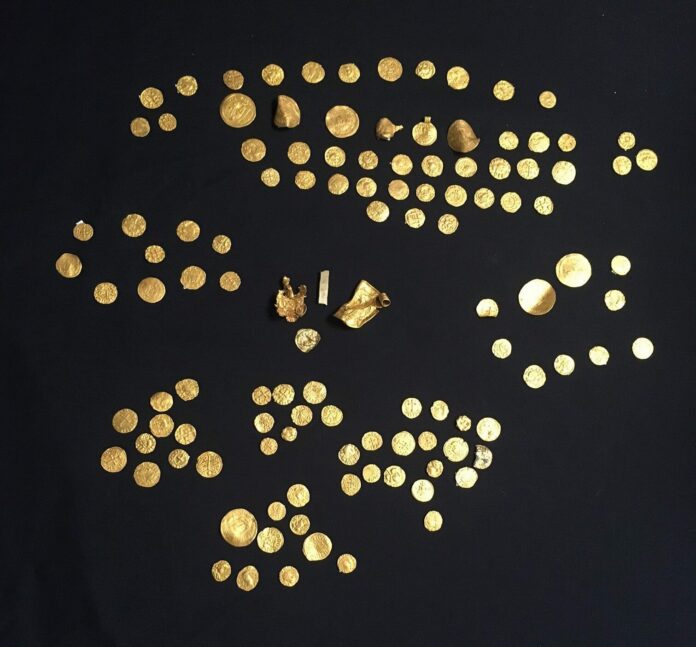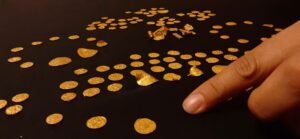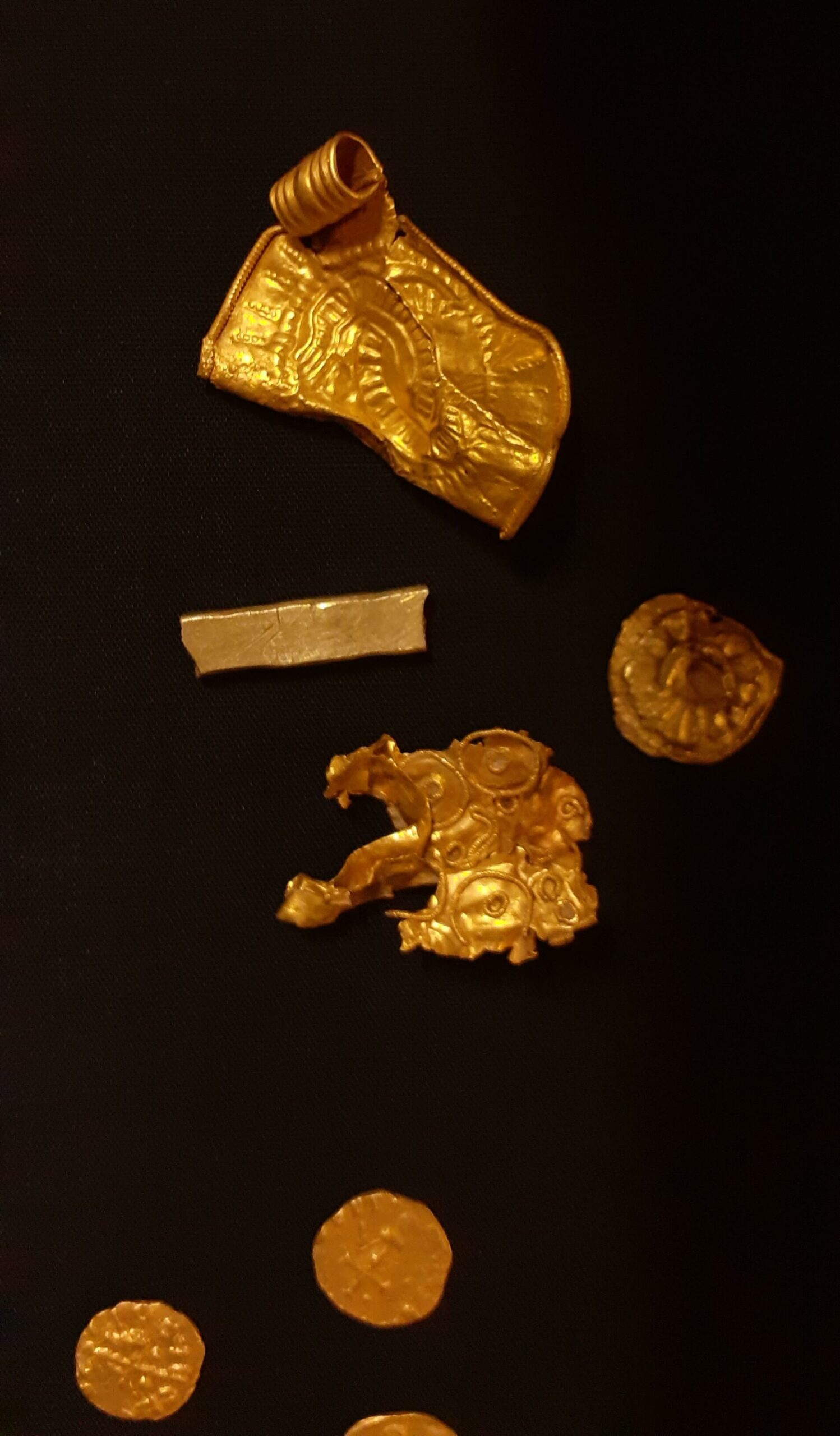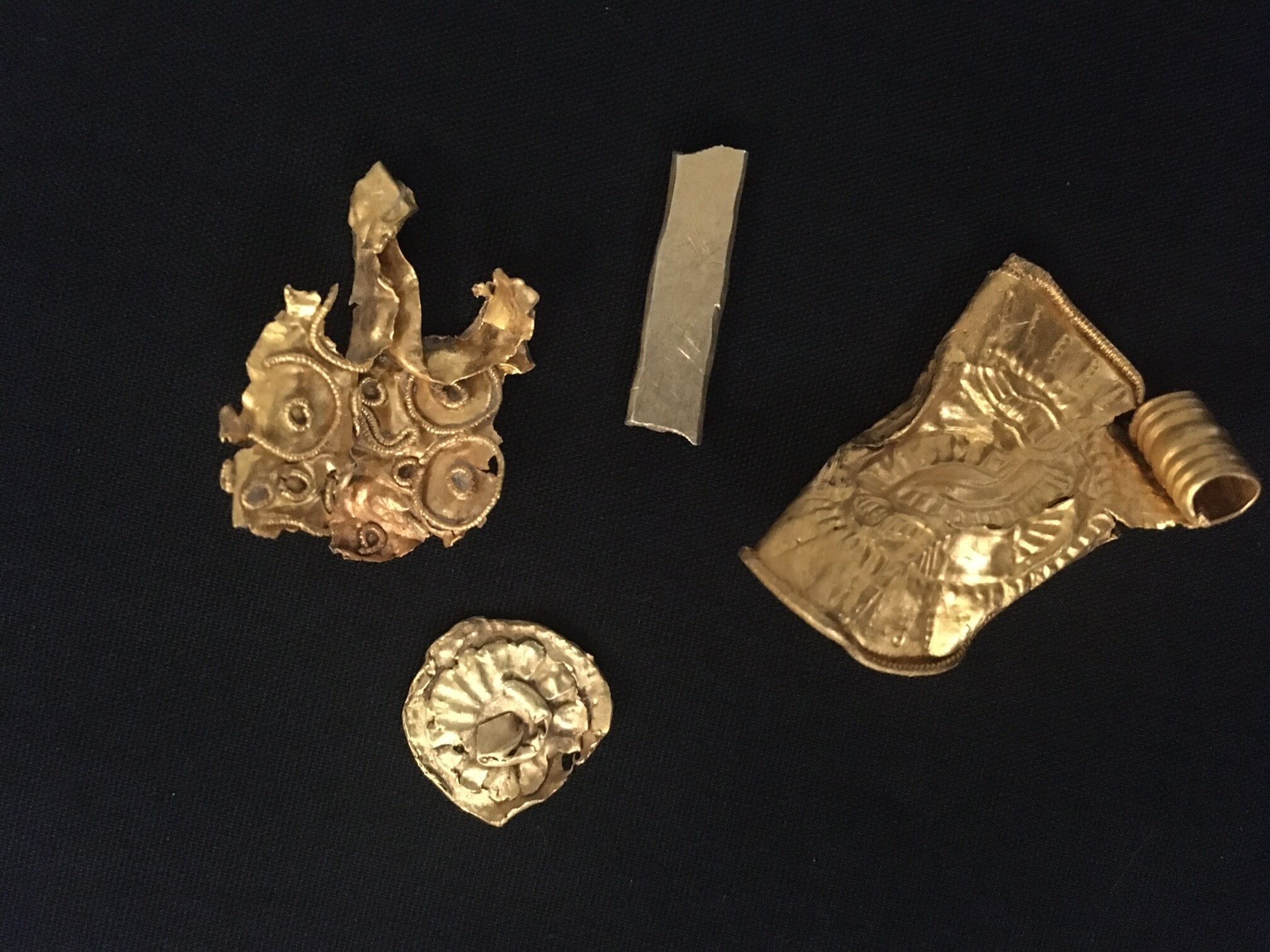
A find of 131 gold coins along with four other gold objects dating to 1,400 years ago stands to be the largest find to date of gold coins from the Anglo-Saxon period in England.
Currently, HM Coroner for Norfolk is holding an inquest to determine whether an important find of gold coins and other objects from West Norfolk constitutes Treasure under the terms of the Treasure Act (1996). To qualify as Treasure, any two or more coins which contain more than 10% of precious metal and which are more than 300 years old are defined as Treasure and are property of the Crown. Typically, the Crown only claims the find if an accredited museum wishes to acquire the find, and is in a position to pay a reward equivalent to the full market value of the find.
Coins from the Byzantine Empire and Francia
Buried shortly after AD 600, the West Norfolk hoard contains a total of 131 gold coins, most of which are Frankish tremisses, as coins were not yet produced in East Anglia at this date. The hoard contains nine gold solidi, a larger coin from the Byzantine empire worth three tremisses. The hoard also contains four other gold objects, including a gold bracteate (a type of stamped pendant), a small gold bar, and two other pieces of gold which were probably parts of larger items of jewellery. The presence of these items in the hoard suggests that the coins should be seen as bullion, valued by weight rather than face value.
At the point when the hoard was buried, England was not yet unified, but was divided into several smaller Anglo-Saxon kingdoms. Of these, the kingdom of the East Angles, including modern Norfolk and Suffolk, was one of the most important. This region is also one of the most productive in terms of finds of archaeological material through metal detecting, so it is perhaps unsurprising that the largest find to date of gold coins from the Anglo-Saxon period was discovered in Norfolk by metal detectorists.

An Unusual Case
Most Treasure cases are relatively straightforward, but this is an unusual case in a number of ways. The majority of the objects were found between 2014 and 2020 by a single detectorist, who prefers to remain anonymous. The landowner has also requested anonymity, and for this reason the find is currently described only as coming from ‘West Norfolk’. This finder has reported all of his finds to the appropriate authorities. However, ten of the coins were found by a second detectorist, David Cockle, who had permission from the landowner to detect in the same field. Mr Cockle, who at the time was a serving policeman, failed to report his discovery and instead attempted to sell his coins, pretending that they were single finds from a number of different sites. Mr Cockle’s deception was uncovered, and in 2017 he was found guilty of theft and sentenced to 16 months in prison, as well as being dismissed from the police.
All of the objects were found in a single field, where a single gold coin was found as long ago as 1990; this was a single find before the introduction of the Treasure Act which means that this coin does not form part of the group being considered by the Coroner. Despite this quirk, it seems almost certain that this was part of the same hoard. The Treasure case includes both those finds from 2014 onwards which were properly reported and those concealed by Mr Cockle, two of which could not be recovered as they had already been sold and had disappeared into the antiquities trade.

A Golden Age for Anglo-Saxon England
The previous largest hoard of coins of this period was a purse containing 101 coins discovered at Crondall in Hampshire in 1828. It had been disturbed before discovery and may originally have included more coins. Buried around AD 640, the hoard contained a mixture of Anglo-Saxon, Frankish and Frisian coins, along with a single coin of the Byzantine Empire, minted in Constantinople.
The decades on either side of AD 600 were quite literally a golden age for Anglo-Saxon England. The largest find of gold metalwork from the period was the Staffordshire hoard, discovered in 2009 by Terry Herbert, and dating from the mid-th century This contained over 5.1kg of gold and 1.4kg of silver. Though the Staffordshire hoard is currently the largest find of precious metal from the period, it contained no coins.
The most famous discovery from this period was the ship burial from Sutton Hoo in Suffolk, recently dramatized in the Netflix movie The Dig, and dating somewhere between AD 610 and 640. The Sutton Hoo burial included a purse of 37 gold coins, three blank gold discs of the same size as the coins and two small gold ingots, as well as many other gold items. The Sutton Hoo purse contained only Frankish coins, reflecting the fact that although imported coins were already used in East Anglia by this time, coins were not yet being minted in the area by the time of the burial. Another important grave was discovered in 2003 at Prittlewell in Essex, probably buried a few years before the Sutton Hoo ship and containing two gold coins and other gold objects.
Norwich Castle Museum hopes to acquire the hoard, with the full support of the British Museum.
Gareth Williams, Curator of Early Medieval Coins at the British Museum said: “This is a hugely important find. It is close in date to the famous ship burial from Sutton Hoo in Suffolk, and although it doesn’t contain as much gold as the whole of the Sutton Hoo burial, it contains many more coins. In fact, it is the largest coin hoard of the period known to date. It must be seen alongside other recent finds from East Anglia and elsewhere, and will help to transform our understanding of the economy of early Anglo-Saxon England.”
Find out more about the Norwich Castle Museum here.
Dishonest detectorists can expect severe punishments in the UK, as we reported earlier this year.
The amount of treasures discovered in British gardens in 2020 is impressive…
In 2020, many new records were set regarding treasure finds.





